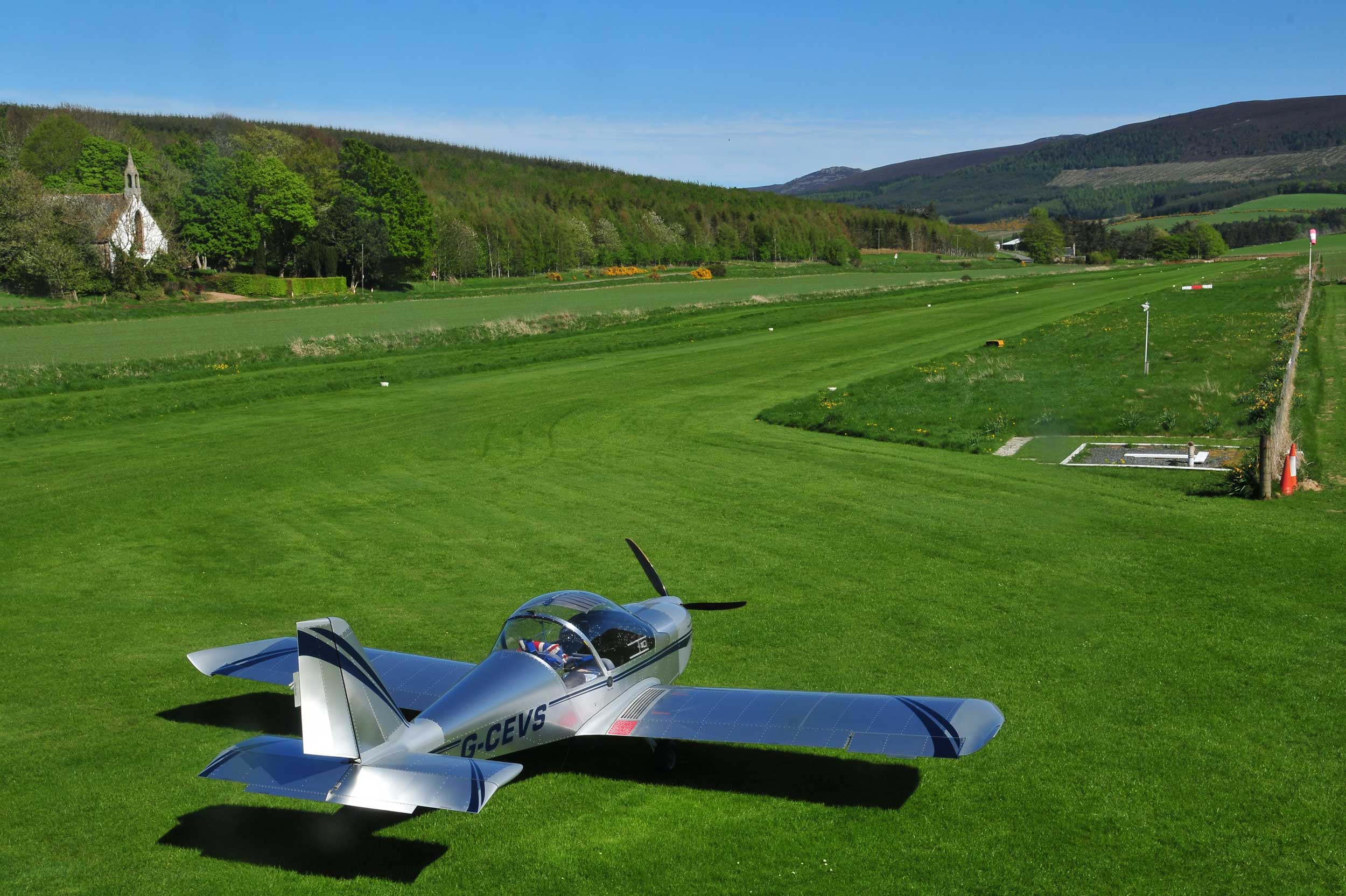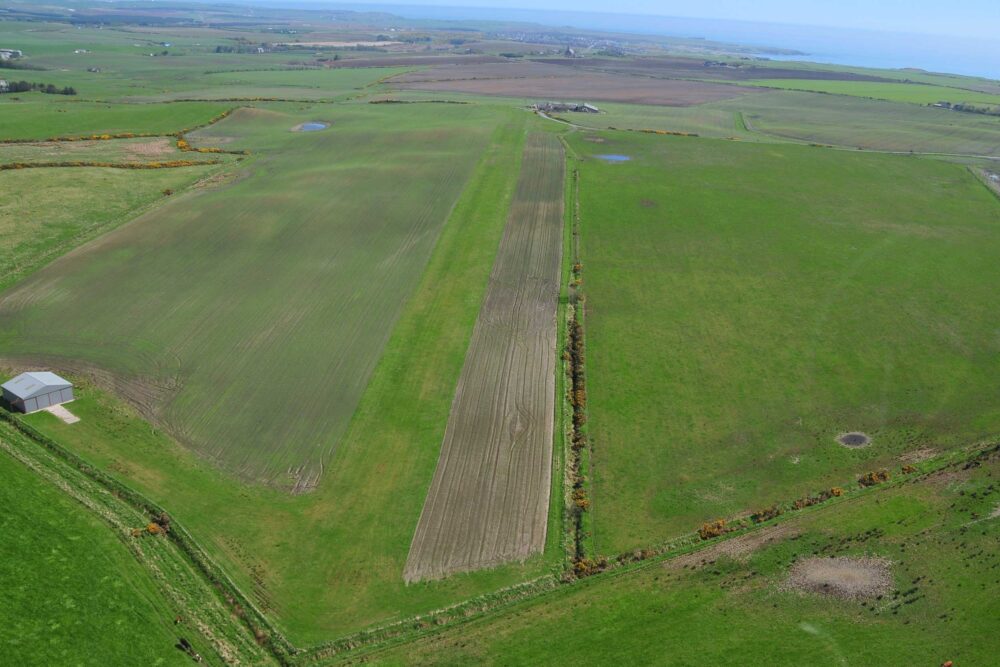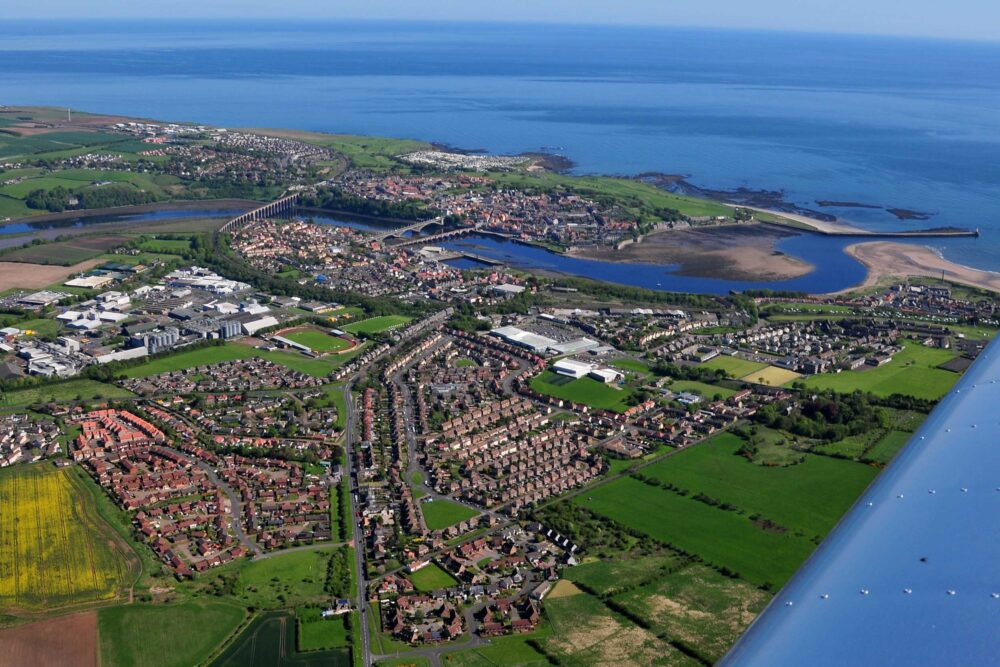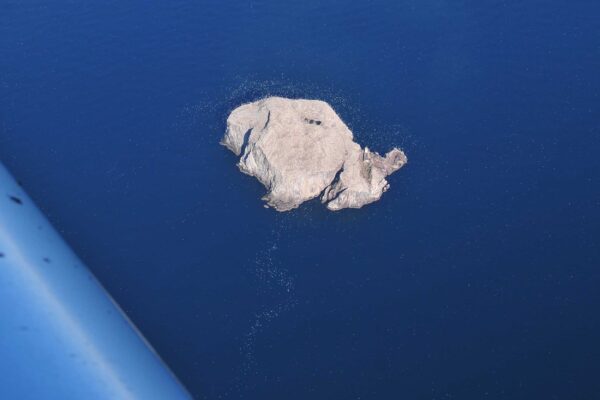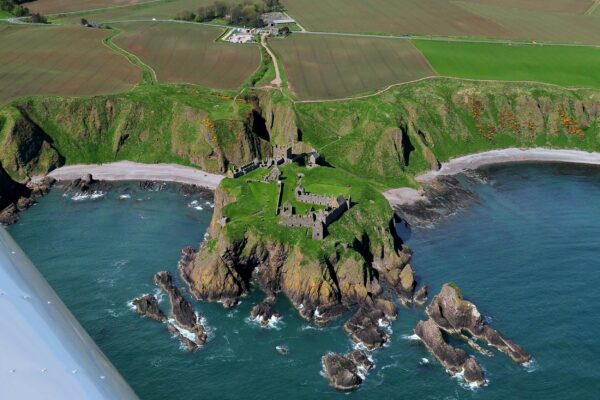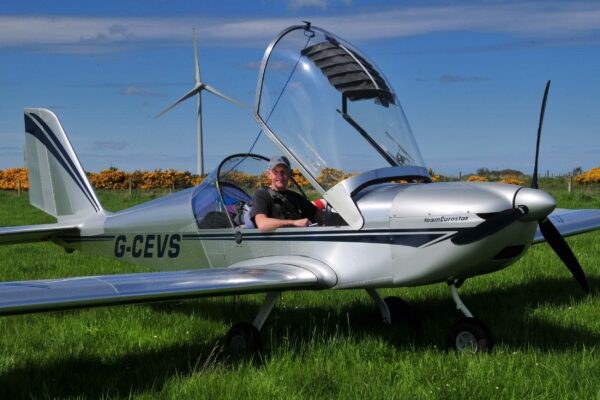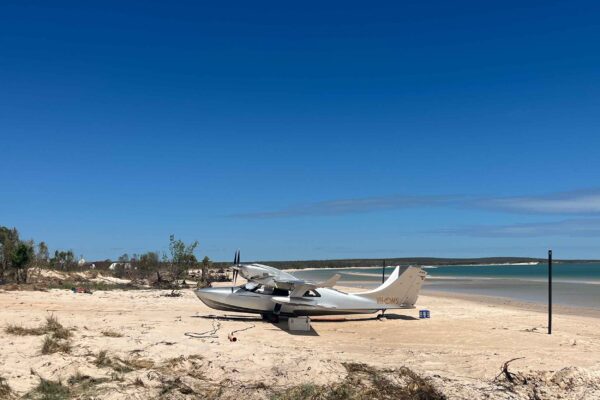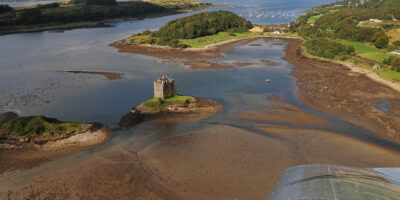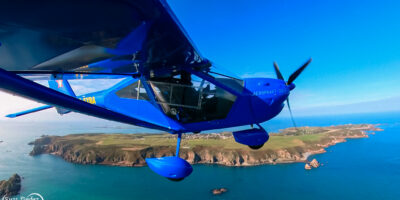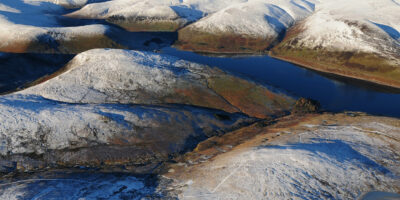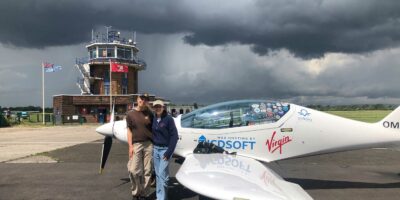Sometimes the UK’s weather surprises you, with a forecast that isn’t only flyable but is also positively outstanding. After a very wet winter, a period of settled high pressure resulted in much chin-rubbing among pilots – where to go and what to do? Faced by a forecast of light winds and horizon-to-horizon sunshine, it’s easy to fly the well-trodden path to your favourite lunch destination, but for me, it’s an opportunity to be adventurous and explore pastures new.
The second week of May has been wonderful, and after discussing options with my flying partner, Steve Biglands, we settle on a day of stripping in northeast Scotland. Steve and I are part of a four-man syndicate with a 2007 EV-97 EuroStar, G-CEVS, based at Eshott in Northumberland. He’s a former RAF QFI who’s well-known for his role as a Victor Captain in Operation Black Buck, the bombing of Port Stanley on Falkland Islands, by Vulcan XM607 on
1 May 1982. The 6,800nm mission was then the longest bombing raid in history and required 11 Victor air-to-air refuelling tankers. Steve was programmed as the long-slot tanker but while refuelling amid a powerful electrical storm over the South Atlantic, the tip of his refuelling probe snapped off in extreme turbulence. Steve and his crew had to give their fuel away to another Victor and returned to Ascension Island with very little reserve.
After eight years on Victors, Steve instructed on Jet Provosts, and then Strikemasters and PC-9s in Saudi Arabia, before finishing his career on Grob Tutors at Leuchars. And that would have probably been that for Steve’s flying, until he discovered the highly affordable
and somewhat wacky world of microlighting, which has seen him add such new experiences as beach and small-strip landings to his extensive aviation repertoire.
At Eshott, G-CEVS is soon pre-flighted and fuelled from jerry cans with standard garage forecourt unleaded, our 80hp Rotax 912 preferring UL-91 or mogas. It’ll take 100LL but prolonged use does cause issues with lead
fouling and, as result, reduced service intervals.
Strip-flying requires careful planning and prior contact with owners is absolutely essential. We’re briefed on slope, the latest ground conditions, grass length, livestock and noise-sensitive properties. Some of our targets are in the VFR flight guides but others aren’t – happily, northern and Scottish flyers are a pretty tight-knit community and contacts are easily made.


